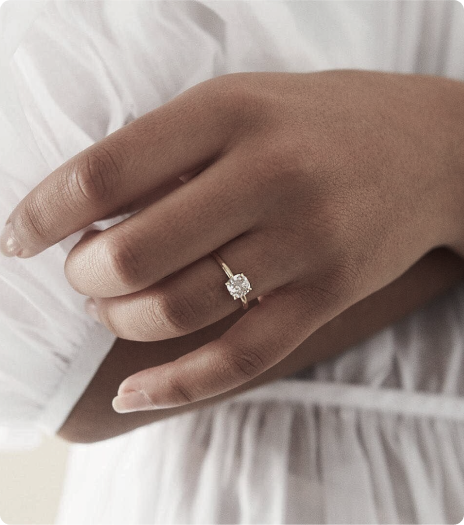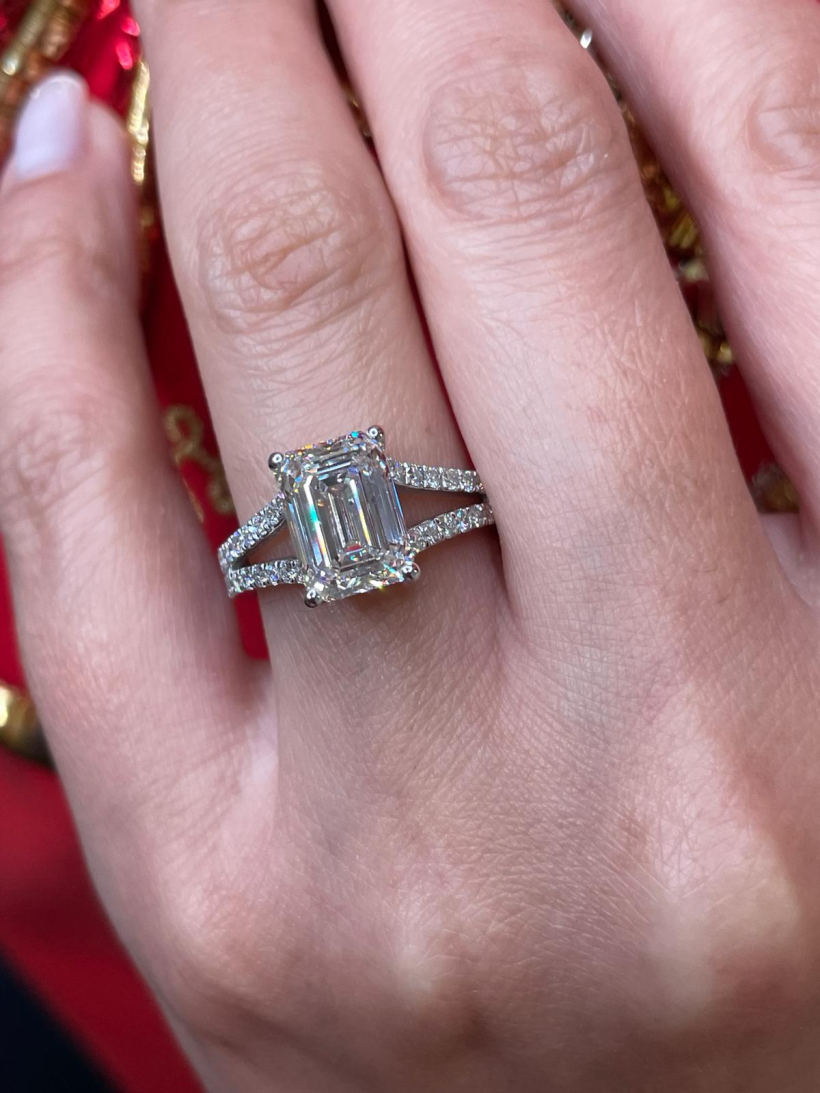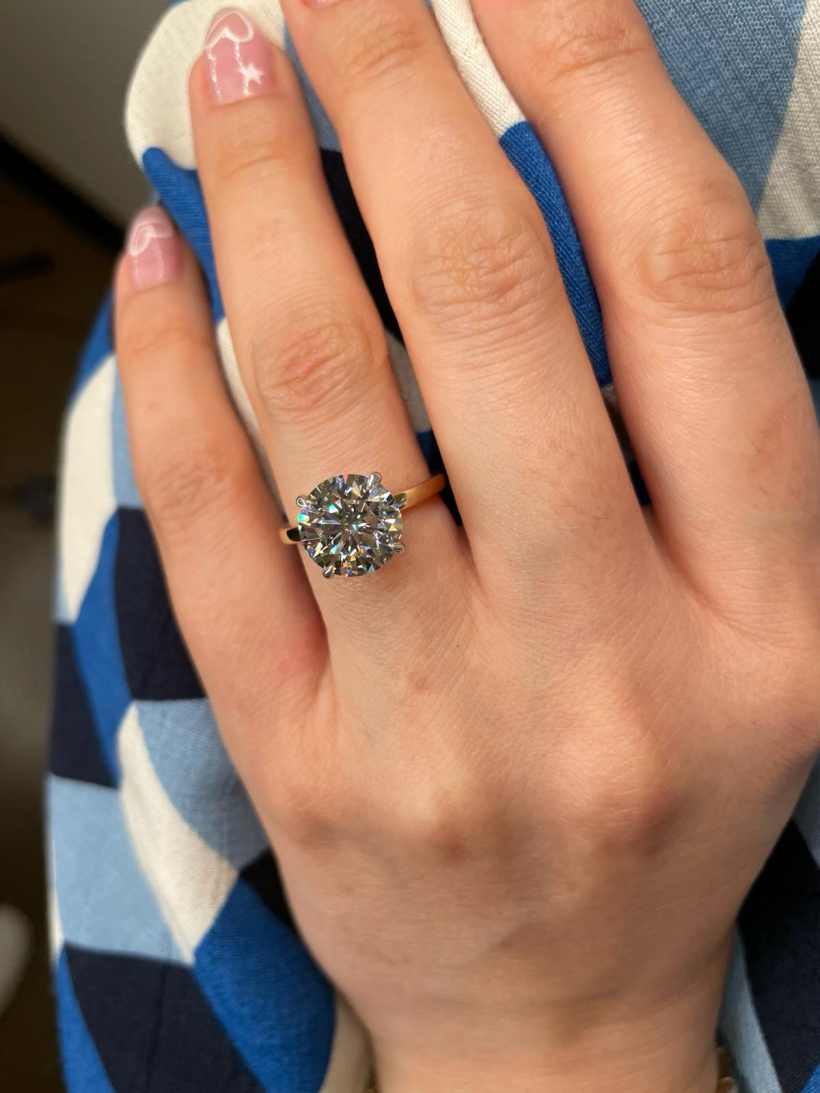There is some truth to the idea that the value of jewelry is subjective. For example, you may consider a ring passed down from your great-grandmother to be absolutely priceless, but if you take it to a jeweler, they may tell you that it has virtually no resale value. However, there are more quantitative, measurable factors that can also affect the value of a ring. If you have a diamond ring, the “4 C’s of diamonds” are among the most important factors to consider — but there are other details that could greatly increase or decrease the value or “worth” of your ring.
If you’re considering selling a ring or you simply want to know how much your ring is worth, you probably have a few important questions. For instance, how is ring value determined? Is a ring’s appraisal value the same as its resale value? Finally, where can you look up the price of an engagement ring?
In today’s guide, we will answer all of these questions and more by examining the different factors to consider with determining the worth of a ring. So let’s get started!
Diamond Cut
The first C in the 4 C’s of diamonds is “cut.” This refers to the shape a diamond has been cut into before being set in a ring. Some common cuts include the Round Cut, Princess Cut, Emerald Cut, and Cushion Cut. The value of a cut can vary based on changing trends and current popularity. That said, diamond cuts that require more raw material to produce and include more individual facets often cost the most. For example, the Round Brilliant Cut is among the most expensive diamond cuts, as it features 58 individual facets.
Diamond Color
The second C of the 4 C’s of diamonds is “color.” All diamonds have a natural color that is often a direct result of the impurities (or lack thereof) in a diamond piece. Diamond colors are generally graded on a scale from D (completely colorless) to Z (light yellow or brown), with colorless diamonds tending to be the most valuable. However, the presence of certain impurities or differences in pressure or heat during formation can also cause diamonds to have fancy colors, like pink, red, or green. Fancy-colored diamonds are often far more valuable than standard diamonds.
Diamond Clarity
The third C of the 4 C’s of diamonds is “clarity.” When you see a jeweler examine a diamond using a magnifier, they are often determining the stone’s clarity. This simply refers to the presence or absence of internal or external inclusions (defects). The more inclusions a diamond has, the lower its clarity (and value). While clarity may sound subjective, each diamond can be graded on a scale from FL (flawless) to I3 (Very, Very Included).
Carat Weight
The fourth and final C of the 4 C’s of diamonds is “carat.” Carat is the measurement used to determine the weight of a diamond. One carat is equal to 0.2 grams. This may not sound like much, but in the world of diamonds, the number of carats can greatly impact the size and value of a diamond ring. The higher the carats, the heavier and larger a diamond will be. Therefore, a one-carat diamond will generally be worth far less than a three-carat diamond (ignoring all other factors).
Diamond Certification
Diamond certification is very important if you want to verify the authenticity of your ring, especially for resale. When you get a diamond certified, you have a trained gemologist examine the stone and grade it based on the 4 C’s of diamonds. This will give you (and any prospective buyers) a complete breakdown of the diamond’s unique characteristics.
However, it’s important to remember that diamond certification is different than diamond appraisal. Certification is always conducted by a gemologist, while appraisal can be conducted by a trained jeweler. An appraisal will provide you with the approximate value of your ring if it were sold brand new today. Appraisal values tend to be much higher than actual resale value, since pre-owned rings are often sold for less than new ones.
Diamond Ring Brand
It may sound strange, but the brand of your ring can also have a huge impact on its appraisal and resale value. This is partly due to the fact that some brands are more trusted for the care and attention they put into their jewelry, and partly because certain brands have inflated prices due to their perceived value. For example, Cartier and Tiffany are among the most valued diamond ring brands in the world. Alternatively, if you have a ring from a lesser-known brand, it may not be as valuable in the eyes of appraisers or prospective buyers.
Ring Metal Type
While the value of rings is primarily linked to the quality of the stone (or stones), it’s also important to consider the ring band. Virtually all ring bands are made of metal, but the type of metal can have a substantial impact on the value of a ring. For example, gold is the most common metal type for engagement rings, but the purity of the gold (24K, 18K, etc) can affect the value, as well as the color (yellow gold, rose gold, white gold, etc).
It’s also important to note that gold is not the only type of metal used in ring bands. Silver, titanium, and platinum are also common. Platinum tends to be the most expensive metal for engagement rings, while silver tends to be the least expensive.
Where You Sell Your Ring
Finally, where and how you sell your ring is one of the most important factors to consider when determining its value. As previously mentioned, your ring may be worth a lot to you, but it may not be worth as much to someone else. If you try to sell your ring to a consignment shop or thrift store, you will often get the lowest possible prices. If you try to sell to a jeweler, you may get slightly higher prices, but maybe not. Ultimately, jewelers and other resale shops that buy jewelry will only buy your ring if they think they can sell it for a profit. This guarantees that you won’t get the best “value” for your ring.
For this reason, many people turn to auctions. If you choose to sell your ring at an auction, you might be able to secure a much higher price, but you’ll also have to pay a fee to the auction house. Plus, you’re taking a significant gamble, as the final bid may be lower than expected.
Lastly, you have the option to sell your ring directly to interested buyers. This is the best way to get the highest resale value for your ring. It also gives you more power to negotiate the price. If you’re currently looking for a way to find interested buyers, your best option is to put your ring up for sale on Have You Seen The Ring. When you sell on HYSTR, you make your ring available to thousands of potential buyers across the country. This way, you can field different bids until you land on a price that meets or exceeds your expectations.
We hope you enjoyed our guide on the factors that affect the price of a ring! Are you currently trying to buy or sell a used engagement ring? If so, be sure to contact HYSTR today!








